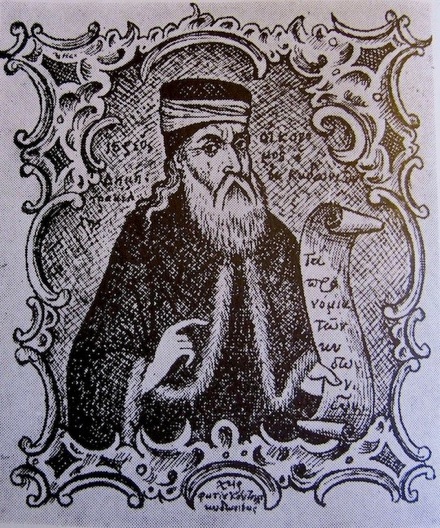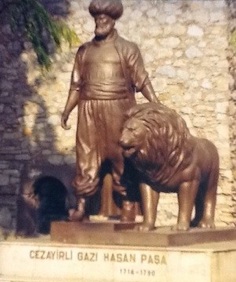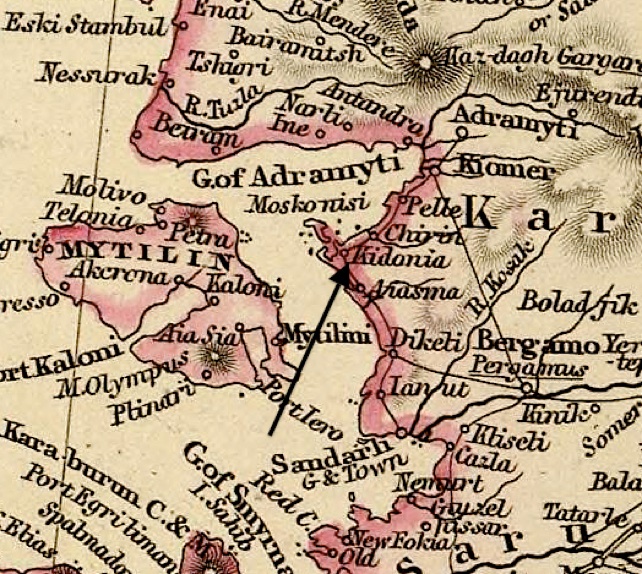The city of Kydonies (also known as Aivali, Ayvalic or Chidognies), is a city about three hours north of Smyrna,
on the Aegean coast of Asia Minor, just across from the island of Lesvos. Its roots are traced to antiquity through the writings of Herodotus (484-425 B.C) and the Roman geographer Plinius Secundus (23-79 A.D. ), both of whom referred to the city of as the capital of the Aeolia region of Asia Minor.
(Map by Johannes Schnitzer, 1482, Leventhal Map Center, Boston Public Library.)
1. The Early Days
Although old maps have long indicated the presence of settlements there, Kydonies did not get its identity until 1773,
when Ioannis Dimitrakellis (1735-1791), a priest with the rank of Oikonomos, managed to obtain from the Ottoman emperors a firman (decree) of autonomy. It included the right for the Kydoniates to run their own affairs (from civic governance to social services) and to have only a token presence of Turkish citizens and government representatives (i.e. judges) in the city. (Right, Fr. Dimitrakellis, and his firman, as drawn by Fotis Kontoglou.)
This uniq
ue privilege was given because three years earlier Fr. Dimitrakellis had offered safe passage to the Ottoman Grand Vezyr
Cezayirli Gazi Hasan Pasa, who was wandering in the area after the defeat of his armada by the Russians at Cesme, a seaside city west of Smyrna. Above left, the Hasan statue in Cesme (photo, John Vasilakis).
Fr. Dimitrakellis, who had been educated in Mt. Athos, was politically astute, strict, ambitious and a visionary. Under his leadership, the city developed voting wards (centered around the city’s 11 churches), a hospital (with mental health and communicative diseases units), an orphanage, a nursing home, three elementary schools (or schools of “common letters”), boys’ and girls’ high schools and the famous Greek Language School of the Panagia ton Orphanon (an institution that was between secondary and higher education), which had a library, physical science labs and a dormitory.
Aivali’s preoccupation with education soon made it the center of Greek letters in Asia Minor, and students as well as famous teachers began to come to the city. The city’s population in the 18th and 19th centuries was about 30,000-40,000.
The city’s main products were olive oil, soap, fruits, leather goods and fish. The social infrastructure was supported by port fees and through a unique form of stewardship devised by Fr. Dimitrakellis--the “psychomeridion” or “apportionment of the soul.” In this way individuals or families with social conscience could give a portion of their wealth to common city causes. (Map by John Arrowsmith, 1832, Rumsey Map Collection.)




